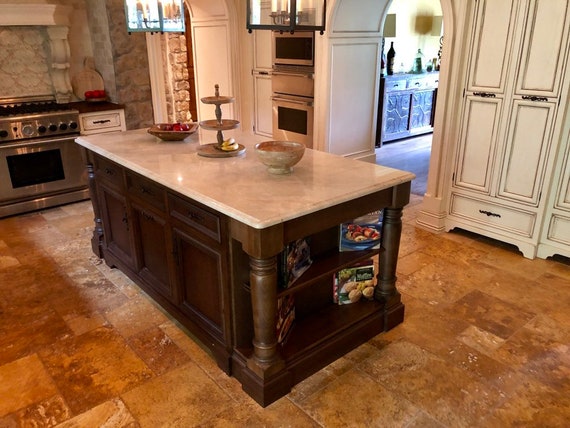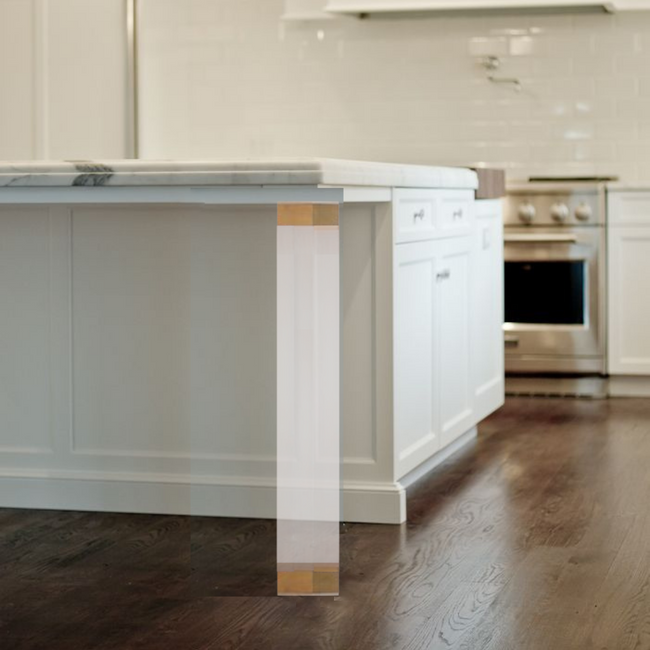Stylish Kitchen Island Leg Concepts to Boost Your Kitchen Decor
Stylish Kitchen Island Leg Concepts to Boost Your Kitchen Decor
Blog Article
Discovering the Crucial Attributes of a Cooking Area Island Leg for Your Culinary Space
The kitchen area island acts as a central center in any kind of culinary space, and the option of leg style is critical in improving both its functionality and aesthetic allure. Comprehending the necessary attributes of cooking area island legs-- consisting of material alternatives, design styles, and security variables-- can dramatically influence the overall experience within the kitchen area. As we check out these aspects, we will discover how thoughtful customization and accessories can boost your kitchen island from a plain utility to a striking centerpiece. What specific factors to consider should be prioritized to attain this balance?
Importance of Kitchen Island Legs
Cooking area island legs play a vital function in both the capability and aesthetics of a cooking area room. They not just sustain the weight of the island but also enhance the overall style, adding to the kitchen's visual allure. The choice of legs can dictate the design of the kitchen, be it modern-day, standard, or rustic.
Functionally, robust and appropriately created legs make sure security, enabling the secure use the island for different jobs such as food preparation, eating, or amusing. Solid legs avoid shifting and wobbling, offering a reputable surface area for daily activities.
Additionally, the elevation and positioning of the legs can influence the convenience degree for those seated at the island. A well-considered height can suit bar stools or chairs, advertising a welcoming environment for events.
Along with these useful factors to consider, kitchen island legs can work as a centerpiece in the space (kitchen island leg). Ornamental or distinctly developed legs can elevate the style aesthetic, making the island a focal point. Thus, picking the ideal kitchen island legs is essential for stabilizing form and feature in any cooking room
Material Options for Legs
Choosing the proper material for kitchen area island legs considerably impacts both sturdiness and style. Usual material choices include timber, metal, and rock, each offering distinct benefits.
Wood is a preferred selection as a result of its heat and convenience. It can be conveniently customized to match various design designs, from rustic to contemporary. Hardwoods like oak and maple give superb stamina and longevity, while softer woods can be a lot more at risk to tear and use.
Metal legs are preferred for their smooth, contemporary aesthetic. kitchen island leg. Stainless-steel and aluminum are not only durable yet likewise resistant to rust and deterioration, making them ideal for kitchen environments. They can produce an industrial look and are often offered in various surfaces to match various other cooking area elements
Stone legs, such as granite or marble, add a component of luxury and stability. While heavier than various other products, they offer phenomenal resilience and can withstand significant weight. They may need added assistance to guarantee appropriate balance.
Eventually, the choice of product need to straighten with both practical demands and the overall layout vision of the kitchen area room, making certain that the island legs enhance both utility and aesthetics.
Style Designs to Think About
What design styles should be thought about when choosing legs for a kitchen island? The option of leg style significantly influences the total visual of your culinary room. For a modern kitchen, sleek and minimalistic leg styles, such as stainless steel or geometric forms, can enhance the modern allure, providing a clean and uncluttered look.
In comparison, standard cooking areas gain from timeless styles such as transformed or carved wood legs, which include heat and personality. These options usually feature elaborate information that match classic furnishings. For a rustic ambiance, think about legs made from reclaimed wood or functioned iron, which bring an organic, natural quality to the space.
If you lean towards a commercial theme, durable metal legs with a distressed surface may be ideal, providing an edgy yet innovative touch. Additionally, farmhouse style kitchen additional resources areas can incorporate beefy legs that evoke a feeling of strength and homeliness.

Elevation and Stability Elements
The elevation and stability of a kitchen island are critical components that straight impact its functionality and user experience. An excellent kitchen island leg must provide enough elevation to accommodate a range of jobs, from food prep work to casual dining. Normally, cooking area islands stand between 36 to 42 inches tall, aligning with basic counter and bar elevations. This range makes sure comfort for customers while carrying out numerous activities, thus go now improving the total use of the space.
Stability is just as vital, specifically as kitchen area islands commonly serve as focal factors in culinary environments. The leg's add-on to the island's base should be secure, making certain durability and resilience versus the wear and tear of daily usage.
Modification and Devices
Customization alternatives and accessories for cooking area island legs can substantially enhance both the aesthetic charm and capability of the space. Homeowners can choose from a range of products, including stone, timber, and steel, enabling smooth assimilation with existing kitchen area design. The choice of surface-- be it a natural stain, repaint, or powder layer-- more individualizes the appearance, making certain that the island complements the total style motif.
In addition to material and finish, house owners might likewise discover the consolidation of devices such as ornamental brackets, adjustable feet, or incorporated shelving. Brackets can offer extra support while contributing to a modern-day or rustic aesthetic. Flexible feet are especially valuable for irregular flooring, making sure the island stays stable and level, which is important for both security and functionality.

Final Thought
In verdict, kitchen island legs serve an important function in providing security and improving the total visual of the culinary area. Modification alternatives and devices can raise the kitchen area island, making it an unique focal point within the home.
The kitchen area island serves as a central hub in any kind of culinary space, and the choice of leg design is crucial in improving both its capability and visual charm. Comprehending the vital functions of cooking area island legs-- including material choices, design styles, Clicking Here and stability aspects-- can significantly influence the general experience within the cooking area.Cooking area island legs play an important function in both the functionality and aesthetics of a kitchen area area.What layout styles should be thought about when picking legs for a kitchen area island?In conclusion, kitchen area island legs offer a crucial duty in offering stability and enhancing the general visual of the cooking room.
Report this page